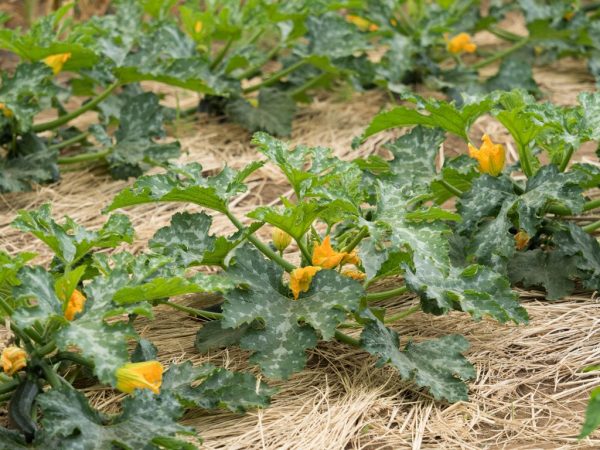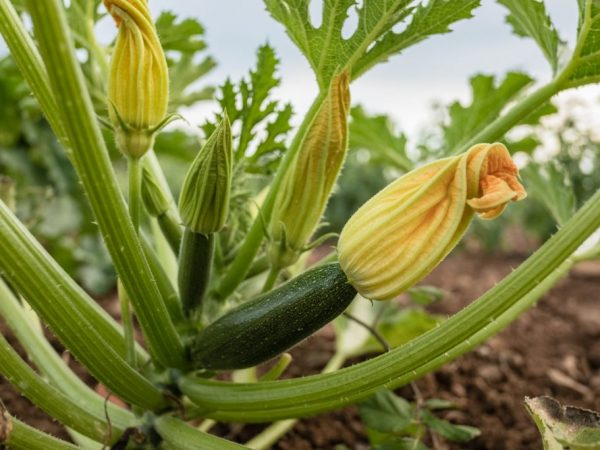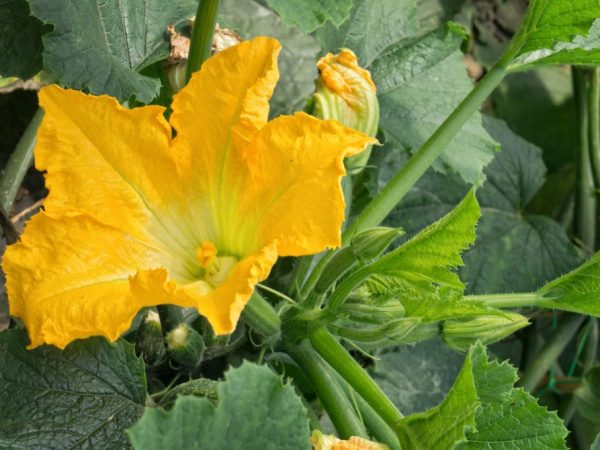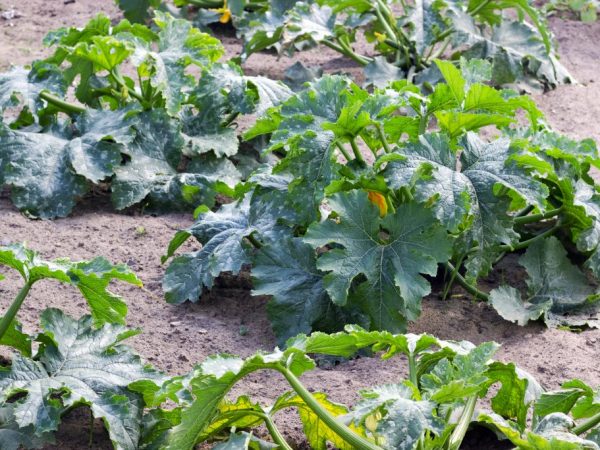Methods for feeding zucchini
Zucchini are unpretentious in care, but with the help of fertilizers it is possible to increase the yield and protect the plant from diseases. If you feed the soil with tea, iodine, yeast and other natural ingredients, the shoots will start growing, and the fruits will not lose moisture. Fertilizing zucchini in the open field or in a greenhouse is an effective element of caring for them.

Methods for feeding zucchini
Top dressing in the open field
Zucchini need timely watering and periodic fertilization. Regardless of the plant variety, the culture does not require other special conditions.
Top dressing is useful during the period when the stems turn yellow or darken: such changes indicate a lack of nutrients. They are as important to the pumpkin crop as watering.
The site, if it is located in the open ground, is fertilized at different periods with the introduction of nutrients: the soil is nourished before planting zucchini and during the formation of inflorescences, and then fruits.
Folk remedies
The easiest fertilization option is compost. It belongs to natural mixtures that are used to enrich the soil. To replenish the soil, flooring is made. It consists entirely of thick compost, the height of which must be at least 4 cm.
In the open field, recharge is carried out with mulch. For this, humus and straw are mixed. With the help of such a tool, not only zucchini grows quickly, but also weeds grow less.
Ash is used to enrich the soil together with humus - this means the soil is covered at least three times during the entire ripening period of the zucchini. Crops are treated with boric acid and iodine, but only during a certain period, when the prevention of fungal diseases is needed.
Folk remedies may include infusions of weeds and common herbs.
Chemical fertilizers
Mineral substances and vitamin complexes are selected for a certain period of culture development.
The most popular inorganic soil additives are:
- calcium;
- phosphorus;
- nitrogen;
- magnesium.
The minerals found in commercially available concentrates improve nutrient synthesis. As a result, the stems, leaves and fruits are filled with vitamins. The less mineral compounds in a culture, the more it is susceptible to fungal diseases.
The main advantage of such nutrition is that it is quickly absorbed. Substances are soluble in water and are suitable for fertilization in all weather conditions.
When choosing a chemical fertilizer for squash, it is important to consider its ability to increase yields at the end of the season.
Combination of organic and mineral fertilizers

The choice of fertilizers depends on the quality of the soil
The amount and quality of top dressing depends on the composition of the soil.Sandy soil is characterized by a small composition of mineral fertilizers, and clay soil retains moisture better.
Therefore, feeding zucchini is carried out using different schemes. The more humus in the soil, the less organic matter is needed. During planting and at all stages of culture development, the method of balanced feeding is used - the same amount of natural and chemical substances is introduced.
Clay soils contain more organic matter, so more minerals are used to feed them. Sandy soils, on the contrary, need more natural feeding, and less chemical fertilizers are applied.
When combining two types of feeding, certain rules should be followed. Ash or lime must not be mixed with mineral components. If such a recharge is planned, it is better to carry it out at different time periods.
Potassium and urea go well with any minerals. Ash does not mix with phosphorus additives. Manure is not combined with saltpeter. Fertilize the soil with such components with a difference of 1-2 weeks.
Refill immediately after disembarkation
The first feeding is very important. Under normal environmental conditions, only two complete make-ups are carried out. When planting zucchini in open ground, the gardener's actions are aimed at gaining vegetative mass and strengthening the rhizome of the culture.
The first feeding necessarily contains nitrogen - this is a substance that is responsible for the rapid growth of the green part of the plant.
Before disembarking, the following soil replenishment options are used:
- pre-dig up the soil. It is necessary to loosen the soil so that there are no lumps in it. After that, ash or lime is added. Such actions equalize the acid balance of the soil. It is better to do feeding in the fall, long before the first disembarkation. If the soil is clayey, then sawdust is added and the soil layer is aerated. The planted culture is watered with a mixture of warm water and nitrophoska solution - about 10 liters per 25 g;
- the first feeding is carried out with natural fertilizers. For this, humus is used. It is added to each well.
If 2-3 fertilizers are used at once: the soil is fed with humus or yeast - then the fertilizers alternate. For soil, the break between feeds should be at least 2 days.
Foliar dressing
Foliar dressing is called top dressing, which resembles irrigation. Such events are held during the planting of culture. During the day, when the crop is exposed to direct sunlight, no irrigation is used to avoid burns.
For seedlings of zucchini, the foliar method with a combined mixture is used. 200 g of urea and 10 liters of water are mixed. This substance irrigates all the seedlings and the soil around the hole.
Fertilizing during flowering
During the flowering period outdoors, squash needs three substances at once - potassium, phosphorus and nitrogen. At this stage, the ovaries are formed, and the leaves are trying to draw out all the moisture from the plant. For this reason, a full doubled soil recharge is carried out.
Complex mixtures are able to compensate for the lack of nutrients in the soil. An alternative option is partial application of mineral fertilizers.

The proportions should be observed in the preparation of fertilizers
During the flowering period, zucchini must be fed with a mixture of boric acid and superphosphate. If such a combination is used, the gardener adheres to a clear proportion: 30 g of superphosphate per 1 g of boric acid. The concentrate is diluted with ten liters of purified water.
The second option for feeding zucchini is to use a folk and cheap recipe. For him you need to mix weeds and the husks left after the onions. Pour boiling water over the dry components. The mixture should be infused for at least a week.
The finished fertilizer smells like yeast: this is a good sign, signaling that the fermentation process is underway.To neutralize it, the drug "Baikal" is used, but even without it, the mixture is used during the period of active flowering of the culture.
Biostimulants
Biostimulants are used to improve the quality of the finished mixture. The active substances of the drugs accelerate the reactions, which leads to the rapid assimilation of the nutrition. Biostimulants are bought in specialized stores.
It is best to include in the care of zucchini during the flowering period:
- "Baikal";
- "Biosporin";
- "Effecton".
Feeding during fruiting
During the formation of fruits, the plant suffers from a lack of moisture and nutrients. In most cases, feeding is carried out with superphosphates and potassium-containing substances.
Recharge is introduced in three ways: in the form of liquid fertilizer, while loosening the soil, or with mandatory watering. In the same period, the risk of fungal diseases increases, therefore, minerals are used most of all.
Folk remedies during this period are best used for additional feeding, and entrust the main care to ready-made balanced mixtures. Zucchini respond well to a homemade growth stimulator: it consists of a solution of urea and water.
Before mixing the make-up, its quantity is calculated. In total, you will need 1 liter of solution for 1 bush. To prepare fertilizer, you will need 1 tbsp. l. urea and 10 liters of liquid. Feeding is carried out twice with a break of 2 weeks.
Foliar dressing
Foliar dressing is carried out not only during planting. When irrigation is used, the stem and fruits are nourished with nutrients. This method allows vitamins to be absorbed faster and to keep the bush in good condition, even during dry periods. Foliar dressing is carried out with urea.
This technique is distinguished by a doubled amount of nutrients. The bush is irrigated with urea in the proportions: 10 g of active substance per bucket of water. After feeding, the fruiting period increases.
Fertilizer for fast growth

Fertilizers help strengthen the root system
Fertilizers are applied for the rapid growth of the crop, regardless of the stage of its development. This nourishment helps to strengthen the stem, leaves and root system. For zucchini, it is better to add more of these substances after the formation of ovaries, when the fruit draws out all the nutrients.
The most popular and effective means for active growth outdoors:
- yeast solution. Components such as yeast accelerate the internal metabolic processes of the stem. As a result, it grows faster and absorbs mineral compounds from the soil. To obtain a solution, warm purified water is poured into a 3-liter glass vessel and 30-35 g of dry yeast is added. After that, a glass of sugar is poured into the solution. Leave it in the sun so that it ferments faster. When it is ready (at least 5 hours have passed), the solution is poured into a bucket of water. Saturated water is used to feed the bushes during the fruiting period;
- Another yeast-based option is to use bread to feed the zucchini bushes. Choose dried crusts or fresh product. The bread is poured with water and infused in direct sunlight: the product should ferment. The most successful proportions for future feeding: 150 g of bread, a liter of water and 10 drops of iodine, which will enrich the mixture. The finished solution is diluted with 10 liters of purified water;
- among folk recipes for feeding the soil on which zucchini grows, the most popular are mixtures with ash. During the fruiting period, you need to cover the root part of the bush with ash. Before this, watering is organized. It allows the beneficial substances of ash to be absorbed faster into the root system of zucchini.
Eggshells are used to strengthen the root of the plant. Provides a natural component for alkalizing the soil. 30 shells are applied to one bush.
Feeding zucchini in the greenhouse
Zucchini are unpretentious to greenhouse conditions.As in the open field, the bushes need minimal fertilization and watering. It is necessary to provide the culture with a neutral or slightly alkaline environment. To increase the nutritional value of the soil, ash and compost are added before planting.
Chemical fertilizers
Chemical feed should contain the full range of minerals required for pumpkin crops. Superphosphates are the easiest option. Chlorine-containing mixtures are excluded: in a greenhouse, zucchini do not react well to such a substance.
Feeding is carried out twice a month - the procedure is combined with watering and loosening the soil. In parallel, weeds are removed, which draw moisture from the soil.
Foliar dressing saturates the stem with the necessary microelements. To do this, mix 10 g of urea and 4 g of copper sulfate, boric acid and manganese. The active ingredients are diluted with 10 liters of purified water. Solution treatment is carried out every two weeks.
Folk remedies
To maintain the correct moisture level and accelerate crop growth, mulching is carried out. For this, sawdust and sunflower husks are used. Such components additionally warm the soil.
Treatment with a mixture of ammonia will increase the amount of nitrogen in the soil. Promotes the growth of the product, the rapid emergence of ovaries and the strengthening of the root system.
A universal recipe for effective feeding in a greenhouse: 50 ml of ammonia per 4 liters of water. A weak solution is prepared with a lower concentration. Mix 1 tbsp. a spoonful of alcohol and 1 liter of water.

